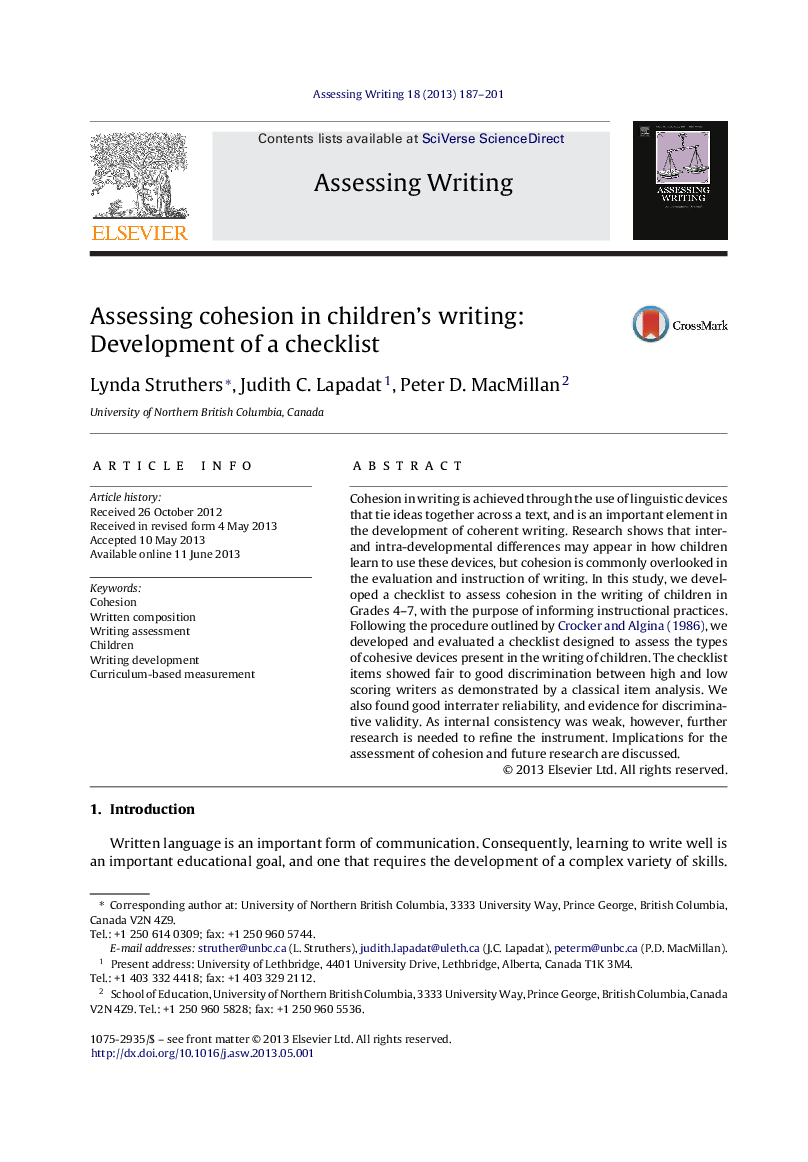| Article ID | Journal | Published Year | Pages | File Type |
|---|---|---|---|---|
| 344270 | Assessing Writing | 2013 | 15 Pages |
•The checklist was developed following standard test construction procedures.•Checklist items showed good performance on a classical item analysis.•Students in Grade 7 scored better than students in Grade 4.•Short writing samples and binary scoring limited internal consistency.•Future study requires evaluation of the tool using longer and more varied texts.
Cohesion in writing is achieved through the use of linguistic devices that tie ideas together across a text, and is an important element in the development of coherent writing. Research shows that inter- and intra-developmental differences may appear in how children learn to use these devices, but cohesion is commonly overlooked in the evaluation and instruction of writing. In this study, we developed a checklist to assess cohesion in the writing of children in Grades 4–7, with the purpose of informing instructional practices. Following the procedure outlined by Crocker and Algina (1986), we developed and evaluated a checklist designed to assess the types of cohesive devices present in the writing of children. The checklist items showed fair to good discrimination between high and low scoring writers as demonstrated by a classical item analysis. We also found good interrater reliability, and evidence for discriminative validity. As internal consistency was weak, however, further research is needed to refine the instrument. Implications for the assessment of cohesion and future research are discussed.
